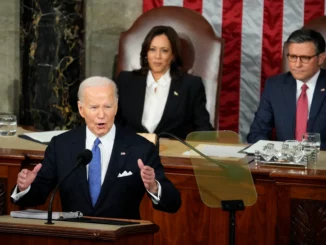
42 key initiatives, 190 key projects designed to help taxpayers, the tax community and the nation
WASHINGTON D.C. (TIP): Following months of work, the Internal Revenue Service, on April 6, unveiled its Strategic Operating Plan, an ambitious effort to transform the tax agency and dramatically improve service to taxpayers and the nation during the next decade. The 150-page report to the Secretary of the Treasury outlines the agency’s historic plans to make fundamental changes following funding from last year’s Inflation Reduction Act. The plan makes clear that the resources to be deployed over the short and long term will be used to:
Rebuild and strengthen IRS customer service activities, putting an end to long wait times on the phone, adding capacity to the in-person taxpayer assistance centers around the country, and providing new online tools for those who want to engage with the IRS digitally.
Add capacity to unpack the complex filings of high-income taxpayers, large corporations and complex partnerships, addressing a growing chasm between the number of experienced compliance personnel at the IRS who audit high-income, high-wealth tax filings for compliance (about 2,600 employees) and the roughly 30,000 individuals making more than $10 million a year, 60,000 large corporations and 300,000 large partnerships and S corps. Update various outdated systems in IRS core operations to help ensure the agency has the most modern and robust security in technology to protect taxpayer data.
In IRS customer service initiatives, taxpayers can already see important changes this tax season, and the plan provides a foundation for future efforts. In compliance initiatives, the IRS will ensure that the agency follows Treasury Secretary Yellen’s directive not to raise audit rates above historical levels for small businesses and households making less than $400,000. What this means is that over the next number of years, as the IRS moves to implement the Strategic Operating Plan, the agency is focused on pursuing high-income and high-wealth individuals, complex partnerships and large corporations that are not paying the taxes they owe. As a result, the IRS has no plans to increase the audit rate for small businesses and households making less than $400,000.
“The plan is a bold look at what the future can look like for taxpayers and the IRS,” IRS Commissioner Danny Werfel said. “Now that we have long-term funding, the IRS has an opportunity to transform its operations and provide the service people deserve. Through both service and technology enhancements, the experience of the future will look and feel much different from the IRS of today. This plan charts the course forward for the IRS and tax administration.”
The plan is organized around five objectives:
Dramatically improve services to help taxpayers meet their obligations and receive the tax incentives for which they are eligible. Quickly resolve taxpayer issues when they arise. Focus expanded enforcement on taxpayers with complex tax filings and high-dollar noncompliance to address the tax gap.
Deliver cutting-edge technology, data and analytics to operate more effectively.
Attract, retain and empower a highly skilled, diverse workforce and develop a culture that is better equipped to deliver results for taxpayers.
Each objective will be accomplished through specific initiatives outlined in the plan. The plan contains 42 initiatives designed to achieve IRS goals, each of which includes multiple key projects and milestones to measure progress. The plan covers more than 190 key projects and more than 200 specific milestones. The IRS will identify additional projects and milestones as work continues. The number of projects and milestones will grow significantly over time as the plan evolves to meet the needs of the nation and tax administration.
For each milestone, the plan includes specific timeframes based on year.
Following passage of the law last August, the IRS embarked on this effort to identify the highest-priority opportunities to deliver transformational change. In addition to working with the Department of the Treasury, the IRS received input from tax professionals, partner groups inside and outside of the tax community, taxpayer groups, IRS federal advisory groups and IRS employees. The planning process also built on prior IRS efforts that received feedback, including the Taxpayer First Act Report to Congress.
In addition to the efforts outlined in the plan, the Inflation Reduction Act is already making a difference for taxpayers and tax professionals during the 2023 filing season.
“People can see the first signs of change this filing season following this infusion of funding,” Werfel said. “Taxpayers and tax professionals can see the difference as we have dramatically improved our phone service thanks to more staff. More walk-in services are available across the country. New digital tools have been added. And these are just first steps.” The future will bring more improvements, with taxpayers able to get more online access to their tax accounts – simplifying their interactions with the IRS. Detailed information about refunds will be easier to track through improvements to the “Where’s My Refund?” tool. Many more service improvements are detailed in the plan.
“For years, the agency has not had the resources to provide the service people deserve. Across all of our operations we’ve seen the impact. We’ve lost employees and seen our resources stretched thin with new mandates and an increasingly complex economy,” Werfel said. “The IRS looks forward to demonstrating how the actions under this plan will translate into real improvements for taxpayers. Technology as well as in-person assistance will be cornerstones of this effort.”
The plan also highlights how the IRS will be working to ensure fair enforcement of the nation’s tax laws and compliance with existing laws while respecting taxpayer rights. The IRS will be solely focused on increased efforts on identified compliance issues involving large corporations, larger partnerships and high-wealth individuals.
“Effective enforcement is an important component of this plan,” Werfel said. “Revenue collected by the IRS supports everything from the nation’s defense to education and roads.”
As the IRS begins implementation of this plan, the agency will work with the public, partners and oversight groups to ensure the transformation work meets the needs of taxpayers and the nation.
“This plan is only the beginning of our work,” Werfel said. “This is a unique opportunity for the IRS and the nation, and we will continue to work closely with our partners as this effort moves forward. This investment in the IRS is already helping taxpayers this tax season, and this plan shows that historic changes are coming.”





Be the first to comment